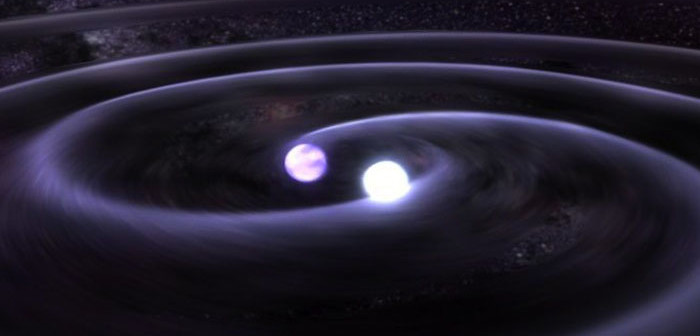The merger of two neutron stars (a NS–NS merger) is suspected to be the most likely source of short-duration gamma-ray bursts (GRBs) — powerful explosions that can be seen from billions of light-years away. But whether a GRB is launched is dependent on what remnant is created by the merging NSs. Do they form another NS? Or a black hole (BH)?
Uncertain Remnant
If the NS–NS merger forms a BH remnant, a GRB can be launched during the ensuing accretion. But if it instead forms a NS, a GRB may only be launched if the remnant collapses to a BH within 100 milliseconds; any longer, and theory says that the GRB jet will become loaded with baryons and choke.
Unfortunately, determining whether the merger will produce a NS or a BH is difficult. A major limitation is that we don’t know what equation of state describes the interior of a NS — which means we also don’t know what maximum mass a NS can have before it collapses into a BH.
Led by Chris Fryer of the University of Arizona and the Los Alamos National Laboratory, a group of researchers undertook a highly collaborative study to better understand the fates of NS–NS mergers.
Maximum Mass

The fraction of mergers that produce BHs (and, consequently, GRBs) and NSs, as a function of the maximum NS mass allowed by the equation of state. Lines labeled BHAD are mergers that produce BHs (under two different initial conditions); lines labeled NS are those that produce NSs. [Fryer et al. 2015]
Fryer and collaborators find that the outcome is highly dependent upon the maximum mass allowed by the uncertain NS equation of state. If this maximum NS mass is below 2.3–2.4 solar masses, most NS mergers will result in a BH within 100 milliseconds of the merger. In this case, most mergers would be capable of producing GRBs. If, on the other hand, the maximum NS mass is above this cutoff, then the majority of NS mergers will form a NS remnant — only rarely launching a GRB.
Since, to match observed GRB rates, the second scenario requires a rate of mergers significantly higher than what theory predicts, it seems more likely that NS masses are limited to 2.3–2.4 solar masses. Upcoming observational projects like advanced LIGO will help to test this theory and place further constraints on our models of NSs.
Citation
Chris L. Fryer et al 2015 ApJ 812 24. doi:10.1088/0004-637X/812/1/24

